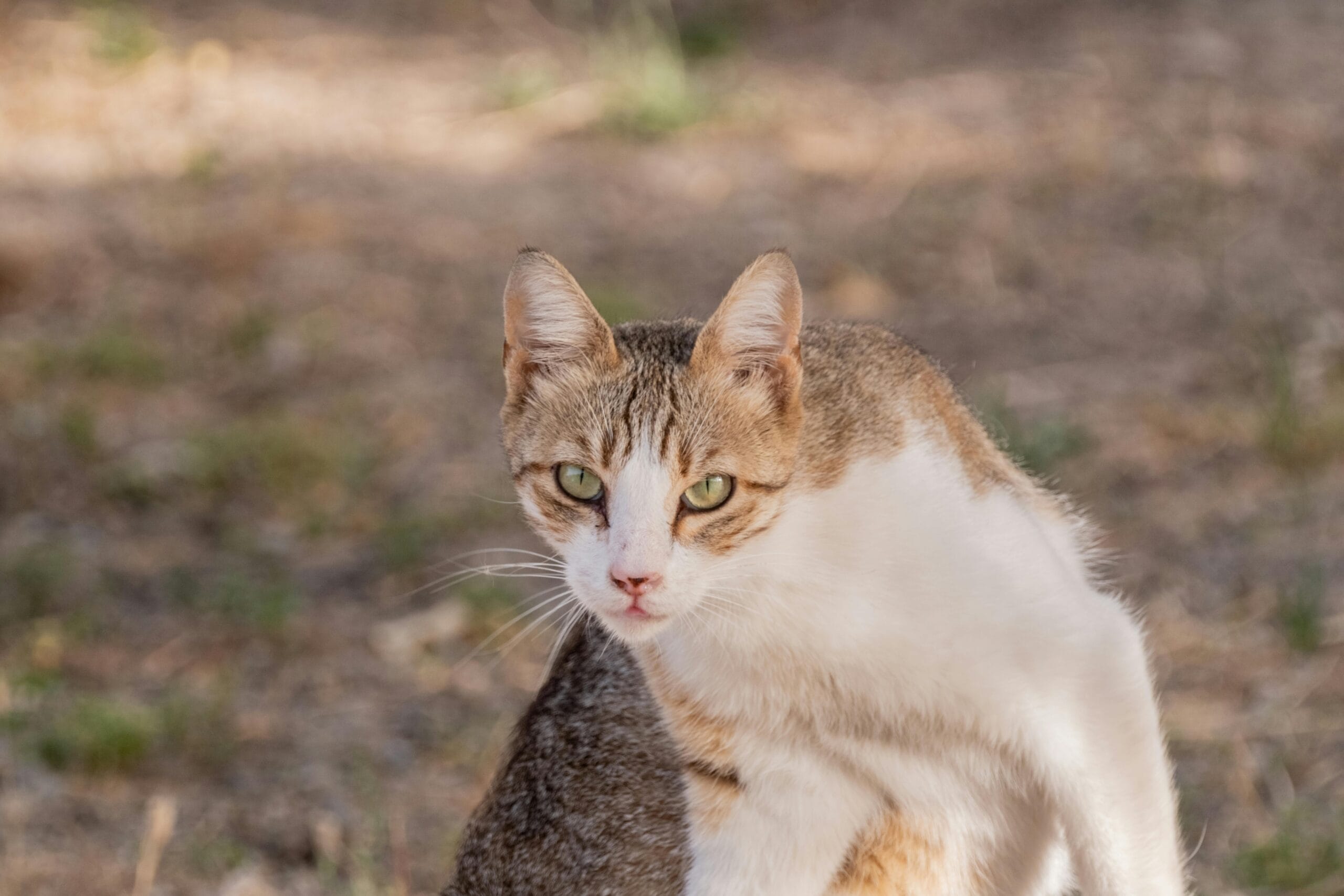Discover the surprising predators of freshwater cats! Learn about Freshwater Cat Predators and the animals that hunt these fish. Uncover the dangers lurking beneath the surface in this insightful article on Predators of Freshwater Fish. Find out now!
What Do Freshwater Cats Get Eaten By? Unveiling the Predators of Freshwater Fish
The aquatic world, particularly freshwater ecosystems, is a complex tapestry of life and death. While we often focus on the beauty and diversity of freshwater fish, understanding their vulnerabilities is crucial to appreciating the delicate balance of nature. This article delves into the fascinating question: What do freshwater cats get eaten by? We’ll explore the various freshwater cat predators and examine the broader context of predators of freshwater fish, focusing on the specific challenges faced by these aquatic creatures.
Understanding “Freshwater Cats”
The term “freshwater cat” isn’t a scientifically precise classification. It generally refers to various fish species, often belonging to the catfish family (Ictaluridae) or other similar groups, that inhabit freshwater environments. These fish vary significantly in size, behavior, and habitat preferences. This diversity directly impacts their vulnerability to predation. A tiny juvenile catfish faces different threats than a large adult bullhead.
Predators of Freshwater Fish: A Broad Overview
Before focusing specifically on “freshwater cats,” let’s examine the broader spectrum of predators that target freshwater fish. This will provide valuable context to understand the specific threats faced by our focal group. Predators range from tiny invertebrates to colossal apex predators, highlighting the intricate web of life in freshwater habitats.
Birds, such as herons, kingfishers, and ospreys, are significant predators, using their sharp beaks and talons to snatch fish from the water’s surface or shallows. Reptiles, including various snake species and turtles, also play a vital role. Snakes, particularly those adapted to aquatic life, can actively hunt fish, while turtles may ambush their prey or scavenge. Mammals, from otters and raccoons to mink and even bears (depending on the region), are effective fish hunters, employing different hunting strategies based on their size and abilities.
Specific Predators of Freshwater Cats
Now, let’s hone in on the specific predators that target freshwater cat species. The threats depend heavily on the size and age of the catfish. Smaller, juvenile freshwater cats are particularly vulnerable to a wider range of predators.
Smaller Freshwater Cats: A Vulnerable Stage
Young, smaller freshwater cats are prime targets for a vast array of predators. Larger fish, including other, more aggressive fish species, will readily consume them. Insects, particularly aquatic insects and their larvae, can also prey on very young catfish. Even some amphibians, such as larger frogs and salamanders, can pose a significant threat.
Consider the life cycle of a domestic cat, albeit a very different species. Do male cats eat their kittens? Sometimes, yes, as detailed in this article: Do Male Cats Eat Kittens?. While not directly analogous, it highlights the vulnerability of young in many animal species. Similarly, the question of whether cats eat their kittens ( Do Cats Eat Their Kittens? ) sheds light on the complex dynamics of parental care and predation within a species.
Larger Freshwater Cats: Facing Different Challenges
As freshwater cats grow, their vulnerability to smaller predators diminishes, but larger predators enter the equation. Larger fish, such as pike, muskie, and bass, represent significant threats to adult freshwater cats. Birds of prey, like herons and eagles, can still pose a threat, particularly to catfish near the surface. Mammals, such as otters and larger fish-eating birds can also prey on adult catfish. Sometimes, the aggression within the same species can cause a problem. For example, Why do cats hiss at kittens? can sometimes translate to aggression, and the same could be said for larger freshwater cats.
Human Impact: A Significant Threat
It’s important to acknowledge the significant role humans play in impacting freshwater cat populations, both directly and indirectly. Overfishing, habitat destruction, and pollution all contribute to reducing catfish numbers and increasing their vulnerability to other predators. Even the introduction of invasive species can disrupt the delicate balance of the ecosystem, creating new predation pressures.
The Importance of Understanding Predator-Prey Dynamics
Understanding the intricate relationships between predators and prey, especially in the context of freshwater cats, is crucial for conservation efforts. By identifying the key threats faced by these fish, we can develop strategies to protect their populations and maintain the health of freshwater ecosystems. This includes habitat restoration, managing invasive species, and implementing sustainable fishing practices.
Furthermore, understanding feline behavior can offer insights into predator-prey dynamics in other species. For example, the question of when kittens become cats, When do kittens become cats? , highlights the developmental stages that influence vulnerability to predation. Similarly, the potential for male cats to kill kittens, Will male cats kill kittens?, illustrates the complex social dynamics that can lead to predation within a species.
Expanding Our Knowledge: External Resources
To further deepen your understanding of freshwater fish predators and conservation efforts, I encourage you to explore these authoritative resources:
National Oceanic and Atmospheric Administration (NOAA) Fisheries: This website provides comprehensive information on various aspects of fisheries management, including predator-prey relationships and conservation initiatives.
World Wildlife Fund (WWF): The WWF offers detailed information on freshwater ecosystems and the challenges faced by many aquatic species, including fish.
Conclusion: A Call to Action
The question “What do freshwater cats get eaten by?” reveals a complex and fascinating story of survival in freshwater ecosystems. By understanding the various freshwater cat predators and broader predators of freshwater fish, we gain crucial insights into the delicate balance of nature. Share your experiences and observations about freshwater fish and their predators in the comments below. Have you witnessed predation in your local waterways? What species did you observe? Your insights are valuable in building a more comprehensive understanding of this vital ecosystem.

Frequently Asked Questions: Freshwater Cat Predators
- What do freshwater cats get eaten by?
- Freshwater cats, depending on their size and species, are prey for a variety of animals. Larger predators include larger fish, birds of prey, and even mammals like otters. The question of “What do freshwater cats get eaten by?” depends heavily on their habitat and size.
- What are the main predators of freshwater fish like catfish?
- Predators of freshwater fish, including catfish (a type of “freshwater cat”), vary greatly depending on the species and size of the fish. Larger fish, birds, reptiles (like snakes and alligators), and mammals (like otters and raccoons) all prey on various freshwater fish. This answers “What do freshwater cats get eaten by?” for a specific type of freshwater cat.
- Are there any specific Freshwater Cat Predators in lakes?
- Lake ecosystems contain various predators of freshwater fish. Larger fish, such as pike and bass, are common predators. Birds like herons and kingfishers also hunt freshwater cats in lakes. The answer to “What Do Freshwater Cats Get Eaten By” in lakes is thus quite diverse.
- What are the Freshwater Cat Predators in rivers?
- River environments present different challenges. Larger fish, like muskie and walleye, pose a threat, as do birds of prey and aquatic mammals. Snakes and larger amphibians may also prey on smaller freshwater cats. Therefore, “What Do Freshwater Cats Get Eaten By” in rivers is a complex question with many answers depending on the river’s location and inhabitant species.
- Do otters eat freshwater cats?
- Yes, otters are known predators of freshwater fish, including many species often referred to as “freshwater cats”. Their diet often includes fish of various sizes, making them a significant part of the answer to “What Do Freshwater Cats Get Eaten By?”.
- What birds prey on freshwater cats?
- Several bird species prey on freshwater cats. Herons, kingfishers, ospreys, and eagles are just a few examples of birds that will hunt and eat various freshwater fish, responding to the query “What Do Freshwater Cats Get Eaten By?”
- What are some examples of Freshwater Cat Predators in ponds?
- In ponds, larger fish, snakes, and wading birds like herons are common predators of smaller freshwater fish (freshwater cats). The size of the pond and the species present will influence the specific predators. Considering “What Do Freshwater Cats Get Eaten By” in ponds requires understanding the ecosystem.
- How does the size of a freshwater cat affect its predators?
- Smaller freshwater cats are prey to a wider range of predators, including larger fish, birds, and amphibians. Larger freshwater cats have fewer predators but may still fall victim to larger fish or mammalian predators. Size plays a crucial role in answering “What Do Freshwater Cats Get Eaten By?”.
- What is the role of Freshwater Cat Predators in the ecosystem?
- Freshwater cat predators are a vital part of the ecosystem, helping to control populations of fish and maintaining a balanced environment. Understanding their role is essential when considering “What Do Freshwater Cats Get Eaten By?” and the broader ecological impact.
- Where can I find more information on Freshwater Cat Predators?
- You can find more detailed information on freshwater cat predators through online scientific databases, books on freshwater ecology, and reputable wildlife websites. Searching for “Freshwater Cat Predators” or “Predators of Freshwater Fish” will yield many results.

What Freshwater Cats Get Eaten By: Practical Tips and Health Considerations
While the term “freshwater cat” isn’t a formal zoological classification, it likely refers to animals inhabiting freshwater ecosystems that share feline-like characteristics, or perhaps a colloquialism. These could include various aquatic mammals, such as otters, or even certain fish species exhibiting predatory behavior. Regardless, understanding the predators within these environments is crucial for their health and survival.
Larger predators pose significant threats. For instance, larger fish may prey on smaller, younger freshwater “cats,” similar to how some male cats might unfortunately harm their own kittens, as discussed in this article about male cats and kitten predation. Understanding potential threats allows for better conservation efforts, focusing on maintaining a healthy balance within the ecosystem.
Another factor to consider is intraspecific competition. Similar to the complex dynamics explored in the article on whether cats eat their own kittens, competition for resources among members of the same species in freshwater environments can be fierce, particularly regarding food availability and territory. This often leads to a hierarchy with larger, stronger individuals dominating and sometimes resulting in the death of weaker or younger animals.
Disease is another major health concern for freshwater “cats.” The spread of pathogens can have devastating consequences on a population. Understanding disease dynamics can lead to effective preventative measures and conservation strategies. This is similar to how maternal behavior in cats, including potential aggression (as seen in the article on cats hissing at kittens) can impact kitten survival and development.
The transition of a kitten to adulthood also presents challenges and vulnerabilities. As kittens grow, they encounter new risks and must adapt to survive. A similar transition occurs in the lifecycle of many animals. Considering the developmental stages helps to understand the timing of various threats and how to appropriately mitigate the risks. You can learn more about this kitten to cat transition here: When do kittens become cats?
Human impact, such as pollution and habitat destruction, also plays a crucial role in affecting populations. These factors increase stress levels, reduce food availability, and increase susceptibility to disease, making them more vulnerable to predation. Understanding the combined effects of these factors is vital for effective conservation.
In conclusion, the survival of freshwater “cats,” whatever species is being referred to, depends on a complex interplay of predation, disease, and environmental factors. By studying these interactions and implementing proactive conservation measures, we can work towards protecting these unique and often overlooked creatures. And it’s also important to understand the complexities of cat behavior in domestic environments, including the potentially tragic scenario explored in this article on male cats killing kittens.
What Do Freshwater Cats Get Eaten By, Freshwater Cat Predators, Predators of Freshwater Fish